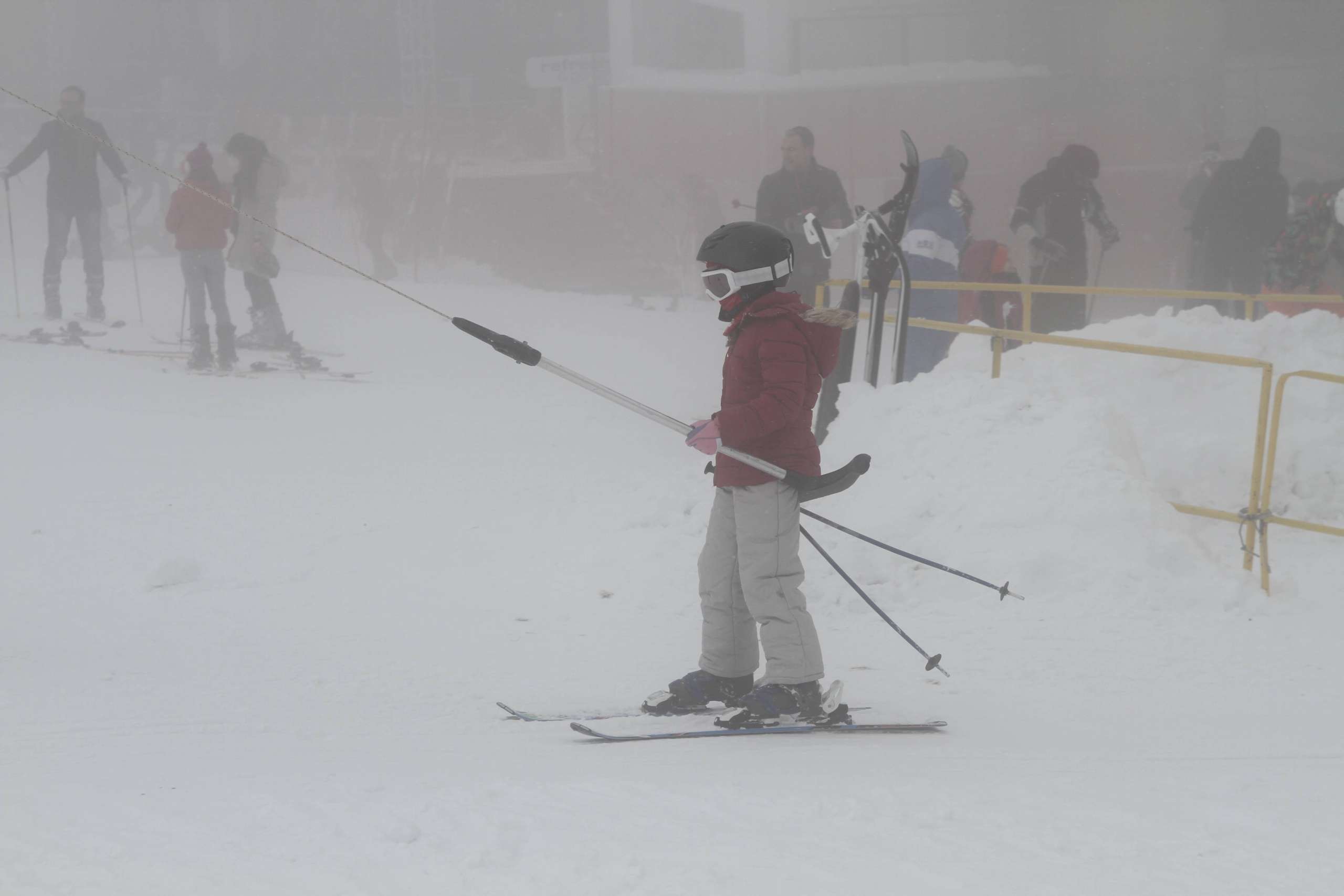One of the most exciting aspects of skiing is being able to ski freely in nature. However, weather conditions are not always ideal. Skiing in foggy conditions, in particular, reduces visibility and compromises safety. Therefore, knowing the rules to follow and techniques to apply when skiing in foggy conditions is crucial for both safety and enjoyment.
The Risks and Challenges of Skiing in Foggy Weather
The biggest challenge of skiing in foggy weather is the limited visibility. It becomes difficult to see other skiers on the slope, turning points, or sudden obstacles. This increases the risk of collisions and falls. Additionally, fog distorts depth perception. The skier may not accurately gauge the true slope of the terrain or the hardness of the snow.
In addition, in foggy conditions, shadows disappear on the snow surface and bumps become less noticeable. This can cause the skier to lose balance. Fog combined with cold weather increases the risk of freezing and getting wet. All these factors make skiing on foggy days more dangerous and require extra caution.
Correct Drifting Techniques When Visibility Decreases
Knowing the correct skiing techniques in foggy weather reduces risks. First and foremost, speed control is very important. When visibility is reduced, speed should be lowered and a controlled descent should be made. Excessive speed creates danger when encountering unexpected obstacles.
Skiers can progress more safely by making short, frequent turns. This technique allows speed to be kept under control. It is also helpful to use the edges of the slope as a reference when skiing. Safety markers are usually found at the edges and can be used for orientation.
Avoid sudden maneuvers in foggy conditions; your movements should be fluid and gentle. This helps maintain balance and reduces the risk of collision with other skiers nearby.
The Importance of Maintaining Posture and Balance
Proper posture and balance are essential for safe skiing in foggy conditions. One common mistake made by beginners is keeping their body too upright or leaning too far forward. These mistakes become even more dangerous in foggy weather.
In the correct stance, the knees should be slightly bent, weight should be shifted forward, and the arms should be open to maintain balance. This position allows for faster reflexes when encountering sudden obstacles. It also minimizes the skier’s risk of falling.
To maintain balance, your gaze should be directed forward, focusing not just on the snow surface immediately in front of you, but on the area ahead. This technique prevents loss of direction in foggy conditions and ensures safer skiing.
Paying More Attention to Safety Rules on the Track
When skiing on foggy days, it is necessary to pay more attention to safety rules than usual. If you need to stop on the slope, it is important to pull over to the side. Stopping in the middle increases the risk of collision because visibility is limited.
Keep your distance from other skiers and ski carefully in crowded areas. When skiing in a group, it is helpful to stay close together so that you don’t lose sight of each other. Pay close attention to signs and warnings, and do not enter restricted areas.
Finally, wearing a helmet, goggles, and brightly colored clothing on foggy days increases both safety and visibility. This makes you easier to spot by other skiers.
Choosing the Right Goggles and Equipment for Skiing in Foggy Conditions
Choosing the right equipment when skiing in foggy conditions directly affects safety. First and foremost, ski goggles are the most important piece of equipment for improving visibility. Lenses designed specifically for foggy days, in shades of yellow, orange, or pink, increase contrast, allowing you to see details on the slopes more clearly. Additionally, it is a great advantage that these goggles have ventilation systems that prevent fogging.
Ski clothing should also make you easier to spot when visibility is limited. Brightly colored jackets and pants help other skiers see you more easily. Reflective accessories also increase visibility. In addition, protective gear such as helmets, wrist guards, and knee pads become even more critical in foggy conditions. This is because the risk of falling increases, and equipment minimizes injuries.
Communication Among Skiers and Group Skiing Techniques
Skiing alone in foggy conditions is not recommended. Skiing in a group is much safer when visibility is reduced. However, when skiing in a group, certain methods should be used to communicate and avoid losing track of each other.
A certain distance should be maintained between skiers, and a group leader should be designated. The person in front clears the way, allowing those behind to follow more safely. Verbal warnings or hand signals can be used among group members. Communication devices such as cell phones or walkie-talkies are also useful in emergencies.
Most importantly, when skiing in a group, everyone should stay on slopes that are appropriate for their level. Speed and route should be balanced so that inexperienced skiers and experienced skiers can ski at the same pace.
Tips for Controlling Speed and Avoiding Sudden Maneuvers
On foggy days, visibility is reduced, so the most important technique is to keep your speed under control. Skiing downhill at high speed increases the likelihood of encountering sudden obstacles or other skiers. Therefore, controlled skiing techniques should be used.
Skiers can reduce their speed by making short, gentle turns. Skiing with regular turns instead of sudden braking is a safer method. Additionally, sudden maneuvers should be avoided in foggy conditions. This is because other skiers around you may not see you, increasing the risk of collision.
In short, the most important safety tips are to slow down on foggy days, pay extra attention, and drive calmly without panicking.
Don’t Forget to Check the Weather and Trail Conditions Before Skiing
Before skiing in foggy conditions, it is essential to check the weather reports. Fog density may increase or decrease throughout the day. Therefore, monitoring the latest weather and slope conditions before heading out allows you to anticipate potential risks in advance.
Information boards located at ski resorts share whether the slopes are open or closed, visibility, and wind conditions. Ignoring this information can lead to serious risks. Furthermore, avoiding the slopes during the hours when fog is at its thickest is the safest choice.
Psychological Preparation: Gliding Through the Fog Without Panicking
When skiing in foggy conditions, psychological preparation is just as important as physical preparation. Panicking when visibility decreases can cause you to lose control. Instead, you need to stay calm, control your breathing, and trust the techniques you have learned.
Skiers should ski more slowly, move in groups, and take frequent short breaks to feel safe. Acting calmly rather than panicking ensures safety and helps you continue to enjoy yourself.
As a result, when skiing in foggy conditions, risks are reduced and a safe experience is possible when appropriate equipment, group communication, speed control, and psychological preparation come together.

